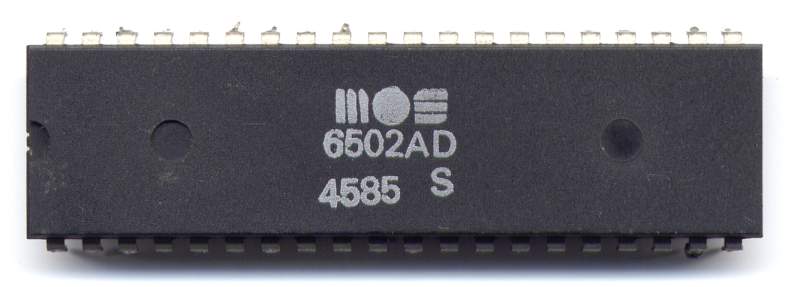Commodore VIC-20

The Commodore VIC-20 was an 8-bit computer, sold by Commodore Business Machines. It was the successor to their first ever 8-bit computer, the Commodore PET, as well as the first ever computer to sell one million units.
History
By using their knowledge from the Commodore PET, the VIC-20 vas designed to be more economical than the PET. Due to this design decision, the VIC-20 was equipped with only 5kB of RAM, and used the same MOS 6502 CPU as the PET. On the other hand, a MOS Technology VIC was used for graphics, which was a general purpose color chip designed for inexpensive terminals and game consoles.
Jack Tremel, seeing the success of the Apple II, wanted a product that could compete in the same segment, as well as it to be presented at the 1980 CES. This triggered the project named TOI (The Other Intellect), which had as lead designers Chuck Peddle and Bill Seiler. What they designed turned out to be to complicated, and therefore it was put aside, in favor of a simpler design. The main problem of their creation was that it required an 80-column character display, which in turn required a different video chip, more specifically the MOS Technology 6564. Due to their initial constraint of being a cheaper model, they couldn't implement the very expensive static RAM required by this new chip.
Meanwhile, an engineer at MOS Technology (Robert Yannes) had designed a computer prototype he called the MicroPET. With the TOI put aside, Jack Tramiel decided he wanted the MicroPET to be mass-produced and completely finished. The reason why it had to be finished was because the original design was missing some key features to be eligible as a "real" computer. After all the modifications were made, the original MicroPET was almost unrecognizable, and it looked more like a Commodore PET. It was released announced in 1980, and continued its dominance until the commercialization of the Commodore 64, in 1982. It was discontinued in 1985.

There are multiple reasons for the VIC-20's unprecedented success, including:
- Price
One of the selling points was its low price, which was set at 299$. It was one of the first low price PCs, and this pushed families to buy one as their first foray into PCs. - Software
The VIC-20 came bundled with many tools as well as games, therefore finding an audience in almost every area. - Manual and heavy Ad campaign
The VIC-20 came with a Full color manual, and the mentality behind this system was "For the masses, not the classes". Therefore the Ads were targeted more to the everyday user, and not the hobbyist or professional. - Expandability
The VIC-20 had the possibility to add modules to its configuration. This allowed the more hardcore enthusiasts to buy and load programs, as well as games. You can think of it as the ancestor of the external hard drive.
The VIC-20s leadership lasted until Commodore announced the Commodore 64, a more advanced machine sporting 64kB of RAM, as well as an improved audio and video department. Due to this improved model, the sales figures of the VIC-20 plummeted, until its discontinuation in 1985.
Applications

Due to factors like its low price, small memory and low-resolution display, the Commodore was primarily used in education, as well as in homes thanks to the software that was available. This latest point was one of the pushing forces behind the success of the VIC-20, since programmers-to-be started to learn and understand programs written in BASIC (see "The BASIC Interpreter") or Assembly, and copied from magazines. Through he modification and study of these programs, people were introduced to the basics of programming.
Another field where the VIC-20 was widely used was at Fort Pierce, Florida Utilities Authority. The application in this case was in order to monitor the output of two of their generators, and display the gathered data on the screens throughout the plant. Thanks to the VIC-20 low price, the plant was able to purchase multiple units of the VIC-20 at the price of one IBM unit.
Reception
The Commodore VIC-20 was very well received. What reviewers were most impressed with was the unit's low price, as well as the more than capable hardware for the target audience. By some reviewers, especially BYTE, it was regarded as "A remarkable achievement, almost unbelievable considering the price of the entire unit"External Links
- [Visited on 04/11/2014] Commodore VIC-20
- [Visited on 06/11/2014] VIC-20 Computer
- [Visited on 06/11/2014] (ITA) VIC-20: History
- [Visited on 04/11/2014] Image "Commodoree VIC-20" under fair use
- [Visited on 04/11/2014] Image "MOS 6502 CPU" under fair use
- [Visited on 04/11/2014] Image "The intended audience" under fair use